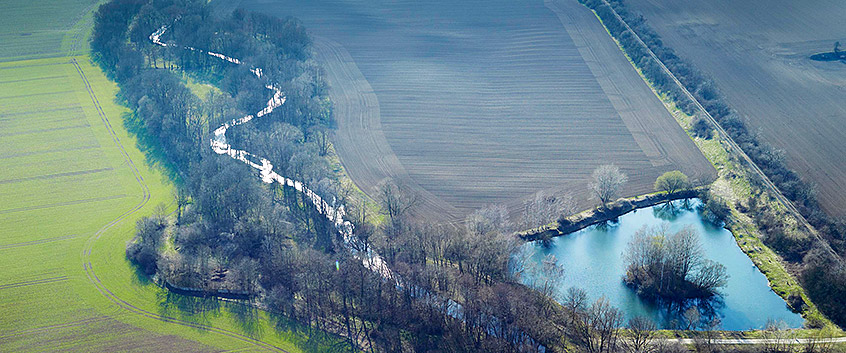
Department of Hydrogeology
How do water and matter move around in the environment? How can the effects of global change and human activity on water and matter fluxes in catchments be quantified to avoid negative impacts on water quality, aquatic ecosystems and the production of drinking water? Where and when are pollutants in the water cycle mobilised, transported and retained? What role does the exchange between ground and surface waters such as streams, rivers and lakes play in this?
Increasing pollution in the water cycle and changes to global climate conditions are presenting a growing threat to the quality and quantity of our water resources. To identify negative trends in good time and to develop suitable management measures, we need robust concepts and models for the quantitative prediction of water and matter fluxes in catchments. A major challenge in the development of such forecasting tools is to identify from a range of hydrological, biogeochemical and ecological processes those which are dominant for a specific substance or landscape type and to adequately represent them in our models.
In the Department of Hydrogeology, we use field measurements, long-term data from authorities and mechanistic process models to analyse, quantify and predict water and matter fluxes in catchments. On the one hand, we develop innovative measurement technologies for highly-resolved quantification of solute concentrations and fluxes in space and time. This provides greater insight into the mobilisation, chemical transformation and transport of substances. On the other hand, we use statistical methods to analyse data and identify and evaluate essential controls for spatial and temporal patterns in water quality and quantity. On this basis we develop new models which on the one hand can depict the observed processes mechanistically and are therefore able to make predictions, and on the other avoid unnecessary complexity due to the reduction to essential, dominant controls.
Together with our partners from practice, we translate these models into practical applications to develop efficient measures to reduce the export of matter and solutes from the landscape into the water cycle.
